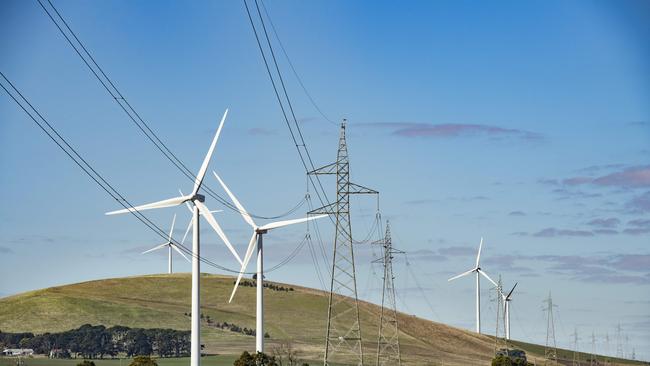NSW energy transition needs $10bn as delays strike
Delays are creeping in as Australia targets a bold 82 per cent renewables target by 2030.

The NSW energy transition roadmap will require $10bn in urgent investment, the state’s Energy Minister will say on Thursday, as cornerstone elements of the plan experience delays.
The previous NSW state government pledged to aggressively encourage the development of zero-emission energy sources to replace the four coal power stations that are due to retire within 15 years, a plan that would involve Australia’s most populous state developing so-called “renewable energy zones”.
These include a mix of concentrated zero-emission sources allowing the state to minimise on building new transmission lines.
But in an announcement that will fuel concern about the state’s progress, Energy Minister Penny Sharpe will reveal that the roadmap require nearly $10bn in urgent spending, while two REZs are now on course to be developed later than previously announced.
“This strategy is the first time that the likely costs have been identified and published on the specific projects. I am concerned that costs and timeframes have grown since they were first proposed in 2020,” Ms Sharpe will say.
“The previous government was asked about costs and timeframes and never provided an answer.”
The announcement will stoke concern about Australia’s energy transition, as NSW is the country’s most coal-dependent state. Much of its traditional energy sources are due to retire in just over a decade, heightening pressure to develop alternative sources.
Much of the $10bn in investment will initially be paid by private investors, but these funds will eventually be recouped via customer bills over the coming years. Government sources said the cost of not implementing the transition would be even more expensive for households as coal power stations reached the end of their lifespan.
The first REZ to be constructed will be Central-West Orana, but that is now not likely to generate energy until 2027, Ms Sharpe will reveal, which will be after the closure of the Eraring power station.
Origin Energy brought forward the shuttering of the 2880-megawatt plant on the Central Coast by seven years to August 2025, earning plaudits for accelerating the decarbonisation of its portfolio and helping achieve Australia’s ambitious 2030 targets for emissions reduction. But energy executives are increasingly concerned about what will replace Eraring, which accounts for 25 per cent of NSW’s energy needs, and the delay will intensify that anxiety.
It is understood the delays are largely driven by an extension to consultation, amid heightened sensitivity about securing landowner approval to build high-voltage transmission infrastructure.
Transmission lines are shaping as the biggest bottleneck in Australia’s plan for the transition of power generation away from its traditional reliance on coal, but many landowners remain vehemently opposed to new developments, despite the promise of state compensation worth $200,000 for every kilometre of land crossed by a major infrastructure project.
While the government will not want to rush the consultations – and although it acknowledges the sensitivities of the issue – industry sources are increasingly alarmed.
Without certainty around transmission lines, renewable energy developers will not proceed with billions of dollars worth of investment, and delays threatens price spikes and even blackouts.
The state government has said it will do whatever is necessary to secure sufficient supply, and traders widely anticipate it will be forced to strike a deal with Origin and its suitors Brookfield to keep Eraring open.
So-called closure contracts have been used in some parts of the country.
EnergyAustralia in 2021 said it would close Yallourn in 2028 after striking a deal with the Victorian government which included some level of financial support and $10 million from EnergyAustralia to support workers.



To join the conversation, please log in. Don't have an account? Register
Join the conversation, you are commenting as Logout